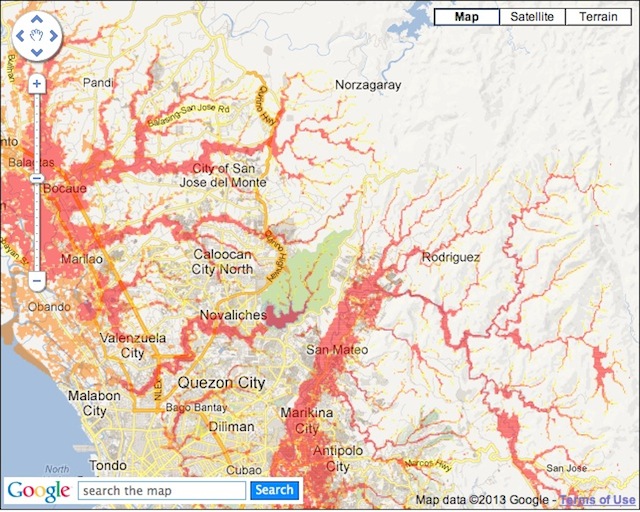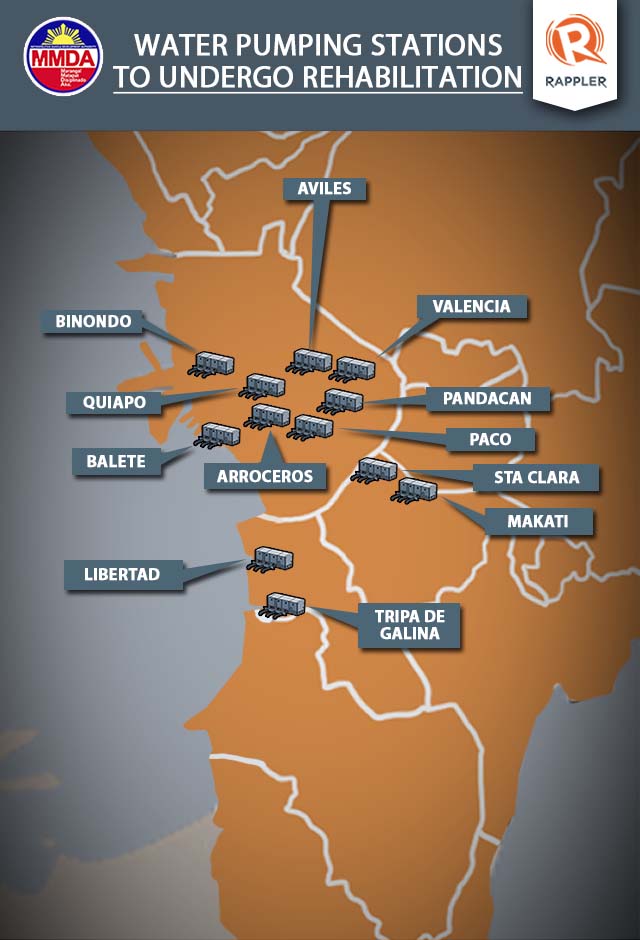SUMMARY
This is AI generated summarization, which may have errors. For context, always refer to the full article.

MANILA, Philippines – This year, the Department of Budget and Management (DBM) rolled out a total of P1.59 billion, in the hope of mitigating perennial flooding in Metro Manila.
The budget is earmarked for the rehabilitation of 12 water pumping stations located in different parts of the metropolis. This is besides the additional P1.07-billion budget set aside for other flood control interventions.
The additional allocation includes investments in flood control equipment, widening and deepening of rivers, upgrading of dikes, and construction of additional pumping stations. All of these projects are awaiting approval of the National Economic and Development Authority.
Metro Manila and perennial flooding
An average number of 20 typhoons visit the Philippines every year. This means that the country is no longer a stranger to bad weather. In fact, with the relative frequency of downpours that the country experiences, officials are already expected to have come up with effective disaster management policies.
Unfortunately, Philippine reality tells a different story. Despite the repetitive narrations of weather tragedies in the past, the country still seems to remain less than prepared whenever a new typhoon enters its area of responsibility.
Damage to life and property is extensive whenever a typhoon passes the country. Inundations also become commonplace with the onset of the rainy season. These are especially evident in Metro Manila where sudden rainfall easily translates to flooded areas.
In the August 2012 flooding in Metro Manila, the rain brought about by the southwest monsoon (habagat) left the country in havoc, leaving major damage to roads, property and life. The nameless storm even surpassed the amount of rainfall produced by Typhoon Ondoy in 2009, affecting almost 300,000 families and leaving an average of 90 municipalities submerged in rainwater.
While flooding is experienced in all of Metro Manila, certain areas are more prone than others. The Metro Manila Development Authority (MMDA) identified several flood-prone areas in each district.
The familiar narratives of heavy rainfall, clogged water sewages, and ultimately, ineffective flood mitigation projects that an estimated 11 million Metro Manila residents have become all too familiar with have raised doubts about whether the city is still a safe place to live in.

Proposed solution
MMDA proposed to rehabilitate 12 water pumping stations in Metro Manila as their primary flood mitigation project this year. These, according to the shortlist released by the MMDA, include the pumping stations in Libertad, Quiapo, Tripa De Galina, Pandacan, Valencia, Binondo, Aviles, Paco, Makati, Sta. Clara, Balete, and Arroceros.

Water pumping stations channel water either towards Manila Bay or the Pasig River, thereby controlling flooding in the city. Of the 51 water pumping stations in the metropolis, 21 are considered major. Only 12 of them are due for rehabilitation by the MMDA.
MMDA has pointed out that these water pumping stations have been in operation for an average of 34 years with either little or no upgrade. They are currently designed to pump out a 10-year period of rain, or about 80 mm of rainfall.
When the southwest monsoon brought rain in 2012, Project Nationwide Operational Assessment of Hazards (Project NOAH) recorded 472 mm of accumulated rainfall within a 22-hour period of non-stop rain in Quezon City. Given the intensity of rainfall and the current design of water pumping stations, it’s easy to understand why heavy flooding occurred.
Budget Secretary Florencio Abad has admitted that previous flood-control efforts have been rendered futile with the current inefficient water pumping system.
“By now, we’re all too familiar with the consequences of inadequate flood control systems, including traffic jams, health hazards, and damaged property. This year, we are seriously investing in infrastructure upgrades for our flood-control strategy, as well as encouraging implementing agencies to execute their anti-flooding interventions as early as the summer season,” Abad added.
After elections
MMDA Chairman Francis Tolentino told Rappler, however, that these projects will push through after the election ban on government projects is officially lifted.
According to the Commission on Elections (Comelec), public works, delivery of materials for public works, and issuance of treasury warrants or similar devices for a future undertaking chargeable against public funds are prohibited from March 29 to Election Day on May 13.
The pending rehabilitation entails upgrading of pumps, engines, floodgates, generators, auxiliaries and other electrical components in order to cater to the present weather conditions.
According to MMDA, the completion of the project may take up to two years. – Rappler.com
Add a comment
How does this make you feel?
There are no comments yet. Add your comment to start the conversation.